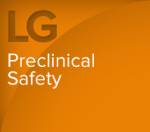An Industry and FDA update on ICH S1 Carcinogenicity Assessment Documents (CADS)

September 9, 2015
Webinar
September 9, 2015 11:30 - 1:00 PM US ET
The presentation from the webinar is available here.
Webinar agenda:
Brief introduction - Mike Graziano (Bristol-Myers Squibb)
An overview of the ICH S1 project – Frank Sistare (Merck)
Current status of CAD submissions - Todd Bourcier (FDA)
A DRA perspective on a quality CAD – Abby Jacobs (FDA)
Industry experience on preparing a CAD – Nancy Bower (Eisai)
The need to conduct 2-year carcinogenicity studies in rats for new pharmaceuticals intended for chronic use continues to be debated among Drug Regulatory Agencies (DRAs) and industry. To achieve a data driven consensus on this issue, there is an ongoing initiative within ICH to test the ability of industry sponsors and DRAs to prospectively predict the outcome of 2-year carcinogenicity studies in rats based on genotoxicity, toxicology, pharmacology, and mechanistic endpoints. It is expected that a successful outcome of this exercise (i.e., the ability to predict the results of rat carcinogenicity studies with a high degree of certainty) may lead to changes in the carcinogenicity testing requirements for small molecules (ICH S1) and a possible waiver of 2-year rat carcinogenicity studies under appropriate circumstances. The initiative was described in a Regulatory Notice that was published by ICH in August 2013. The process involves the submission of blinded Carcinogenicity Assessment Documents (CADs) by sponsors on any drug that is intended to undergo testing in 2-year rat carcinogenicity studies. CADs may also be submitted for drugs in ongoing rat carcinogenicity studies as long as they have not passed the 18 month time point. The CADs should not only include summaries of the relevant pharmacology and toxicology data (including results from chronic studies), but they should also include a comprehensive literature review of the target and a prediction on the outcome and potential value of the carcinogenicity study to the drug development program. The DRAs will also make predictions on the outcome of the carcinogenicity study based on the information provided in the CAD. The predictions by the sponsors and DRAs will be then be compared to the actual study results when available. The strength of the concordance between the predicted and actual results will drive the outcome of this initiative. It was projected that about 50 CADs along with the corresponding study outcomes would be needed to fully test the robustness of the hypothesis.
The purpose of this webinar is to review in more detail the background and objectives of this initiative, to provide a DRA (FDA) update on the status of CAD submissions, and to provide guidance for preparing quality CADs from a DRA and industry perspective. It is also hoped that industry members who join the webinar will gain a much clearer understanding of the value of the project and why their participation in submitting CADs is critical to its success. Mike Graziano (BMS), Frank Sistare (Merck), Abby Jacobs (FDA), and Todd Bourcier (FDA) are all members of the ICH S1 Expert Working Group. Nancy Bower (Eisai) is a member of the PhRMA team supporting this project.